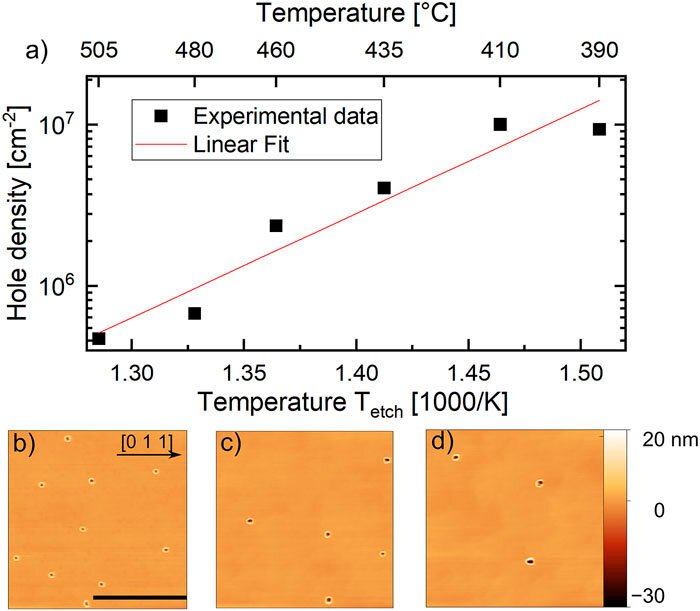Researchers from the Department of Physics and the Institute for Photonic Quantum Systems (PhoQS) at Paderborn University have achieved a significant breakthrough in manufacturing quantum dots. These nanoscopic structures exhibit quantum properties and emit light in the optical C-band, specifically at wavelengths ranging from 1530 to 1565 nanometers.
This accomplishment is notable because it marks the first time that quantum dots with these characteristics have been produced through local droplet etching and subsequent filling of nanoholes in an indium aluminum arsenide / indium gallium arsenide system lattice-matched to indium phosphide substrates.
The potential applications of these quantum dots are vast, with one notable application being their use as a source of entangled photons. Such applications are highly relevant to innovative encryption systems leveraging quantum technologies. The luminescence of these quantum dots in the optical C-band is particularly advantageous because it experiences minimal slowdown in fiber optic networks, making them compatible with the existing network infrastructure. The research team has shared their findings in the journal AIP Advances.
The team, comprised of Dennis Deutsch, Christopher Buchholz, Dr. Viktoryia Zolatanosha, Prof. Dr. Klaus Jöns, and Prof. Dr. Dirk Reuter, employed a technique involving etching nanoholes in an indium aluminum arsenide surface and subsequently filling them with indium gallium arsenide.
“One critical element in the manufacturing process of quantum dots, especially for generating entangled photons, is lattice matching. Without proper lattice matching, tension can arise within the quantum dot, potentially disrupting the quantum mechanical entanglement of the generated photons,” explains Denis Deutsch.
While the method of filling droplet-etched holes to create quantum dots is not entirely new, the researchers deviated from previous approaches by utilizing lattice matching to indium phosphide instead of gallium arsenide. This material alteration allowed them to achieve emission in the C-band. Additionally, the symmetry of quantum dots plays a crucial role in their suitability as a source of entangled photons. Hence, the publication also included a statistical evaluation and examination of the symmetry of numerous holes produced using different parameters.
Although the implementation of this technique is still far from being realized, it demonstrates considerable potential for the manufacturing of quantum dots. Quantum computing is projected to surpass traditional computing in encryption capabilities, and the phenomenon of entanglement offers a promising avenue for securely exchanging encrypted data, as any eavesdropping attempts would be exposed by the laws of physics. Since entangled photons are transmitted through fiber optic cables, it is imperative to minimize transmission losses. “The ability to manufacture photons in the optical C-band, where losses are exceptionally low, represents a significant advancement in encryption utilizing entangled photons,” concludes Deutsch.
Source: Universität Paderborn
